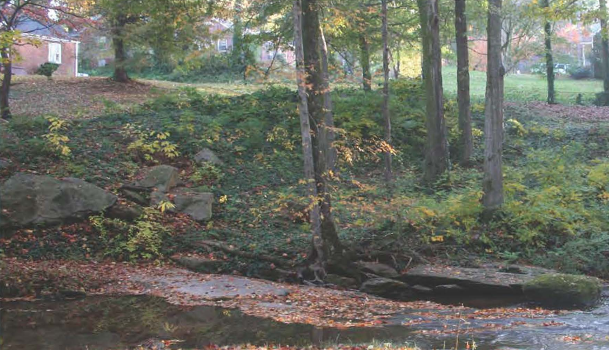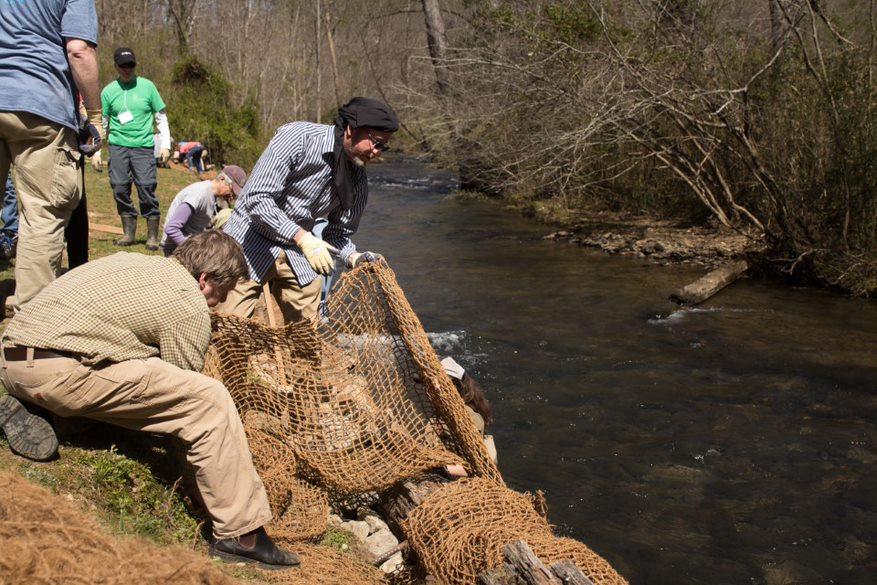
Stream Stewardship
People around the state are becoming increasingly concerned with the condition of streams in their area. The problems facing streams, including eroding banks, flooding, pollution, and loss of habitat and native species, are the result of increased development and other land use changes in our watersheds. These issues can seem complex, but there are many ways one can improve stream conditions and become a stream steward.

Information for Homeowners
There are many practices you can use around your home to improve the water quality of your watershed. Conserving water, caring for a local stream, properly maintaining septic systems, and spreading awareness of water quality within your community are all ways you can practice good stream stewardship.
Related links
-
Life at the Water's Edge: A Guide to Stream Care in Georgia
- Septic Systems Information for Homeowners - EPA
- Residential Stormwater Solutions - Metropolitan North Georgia Water Planning District
- 4 Easy, Affordable Ideas for Creating a Water-Friendly Yard - HomeAdvisor
- Host an outreach event within your community.

Stream Restoration and Native Plants
Stream restoration improves the biodiversity, shape, habitat and water quality of a stream. Planting native plants along your stream helps improve overall water quality and ecosystem health by supporting bank stabilization, slowing and filtering runoff, providing food and shelter to wildlife and pollinators, shading the stream, and restoring natural areas.
Related links
- Soil Bioengineering Guide for Streambank and Lakeshore Stabilization - USDA Forest Service
- Georgia Native Plant Society
- Georgia Exotic Pest Plant Council
- Southeast Exotic Pest Plant Council
- Nonnative Invasive Plants of Southern Forests - USDA
- Center for Aquatic and Invasive Plants - University of Florida

Green Infrastructure Projects
Green infrastructure is a form of stormwater management which uses ecological systems, natural and engineered, to reduce the volume of runoff and pollutant load entering pipe systems and waterways.
Rainfall that flows over the ground into a body of water is referred to as stormwater runoff. Impervious surfaces, such as pavement and rooftops, magnify the amount of runoff entering streams and rivers. While rainfall can help replenish streams, stormwater runoff carries excess sediment, nutrients, litter, and other pollutants that are harmful to aquatic environments.
Traditionally, stormwater runoff has been managed by directing untreated runoff into underground pipes that lead to streams and rivers. Green infrastructure mimics the natural hydrological cycle to capture, infiltrate, evaporate or harvest runoff for use. Green infrastructure projects include reducing impervious pavement cover, bioswales, rain gardens, rain barrels, restoring wetlands, as well as forest conservation and preservation.
Related links
- Green Infrastructure Projects Around Atlanta
- Green Infrastructure - EPA
- National Stormwater Calculator: estimate rainwater and frequency of runoff - EPA
- Reduce stormwater runoff by installing a rain barrel or planting a rain garden.
- Georgia Stormwater Management Manual - Atlanta Regional Commission